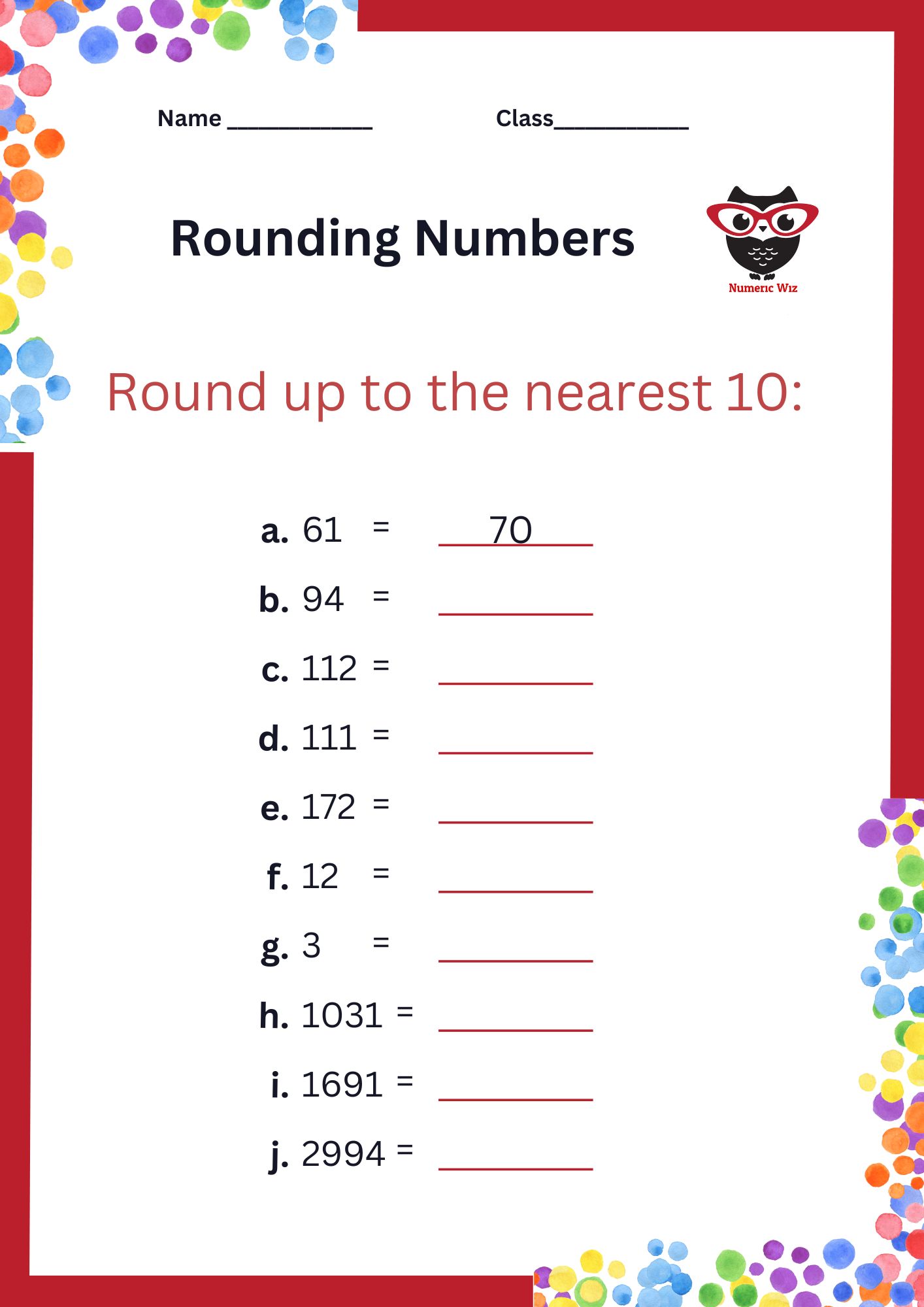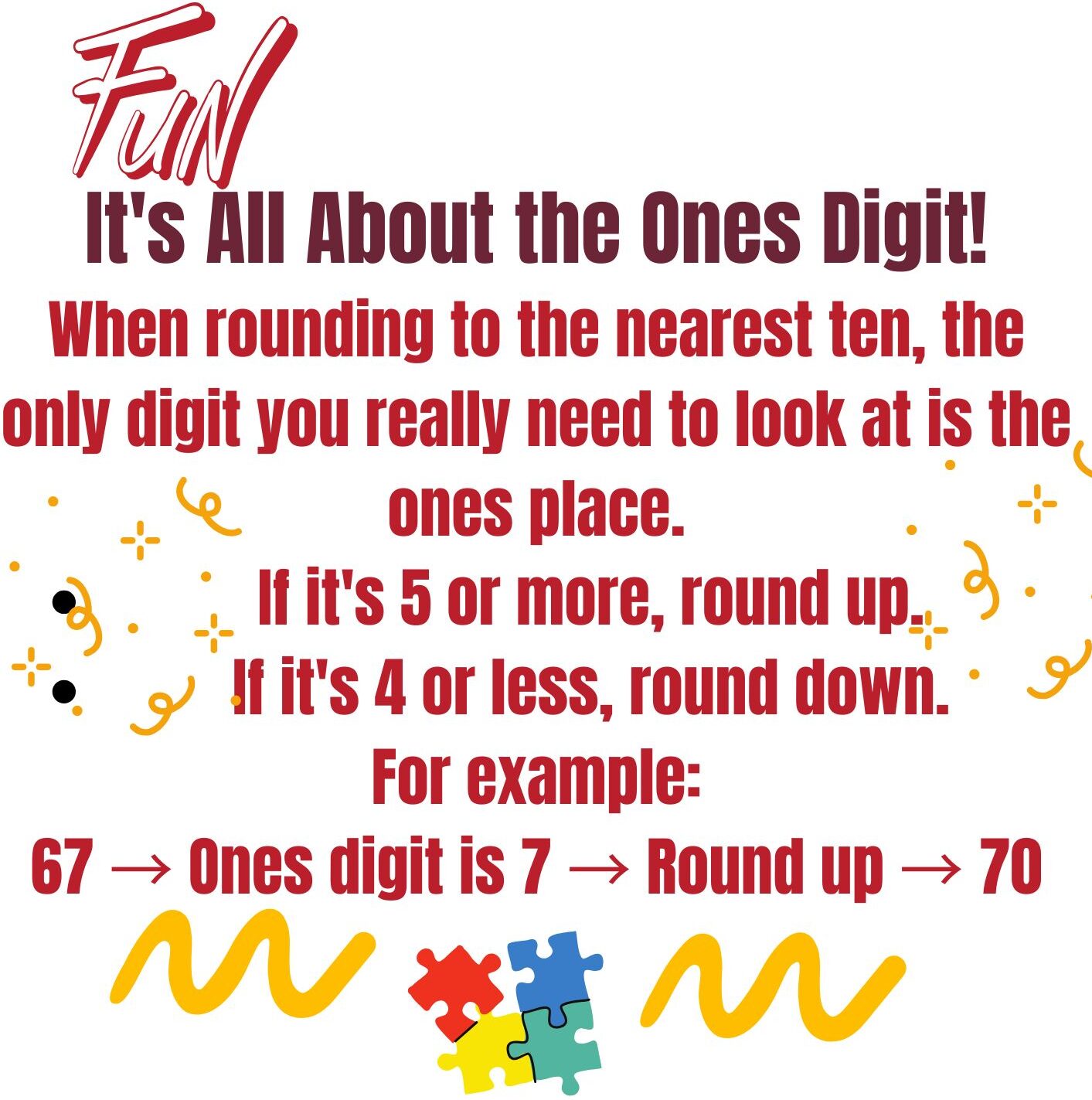
Place value refers to the value of each digit in a number based on its position. Each digit has a specific value depending on whether it is in the ones, tens, hundreds, thousands, etc. For example, in the number 462, the digit 4 is in the hundreds place, representing 400, while 6 is in the tens place, representing 60, and 2 is in the ones place, representing 2.

Let's break down the number 567:
So, the number 567 is made up of:
Round 462 to the nearest 100.
Round 53 to the nearest 10.
Rounding 543 to the nearest 10:
Final solution: 543 rounded to the nearest 10 is 540.
Round 98 to the nearest 10:
Final solution: 98 rounded to the nearest 10 is 100.
Round 82 to the nearest 10:
Final solution: 82 rounded to the nearest 10 is 80.

Round 57 to the nearest 10:
Final solution: 57 rounded to the nearest 10 is 60.
Round 34 to the nearest 10:
Final solution: 34 rounded to the nearest 10 is 30.
Understanding the place value can help students grasp the concept of thousands, hundreds, tens, and ones. This knowledge is crucial for performing accurate calculations, comparing large numbers, and solving real-world problems like managing money or reading measurements. It builds a strong foundation for advanced math concepts.
By practicing place value, you'll be able to solve real-world problems quickly!
Let’s practice and evaluate your work together by place value.
For a limited time
